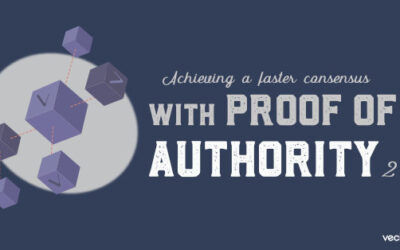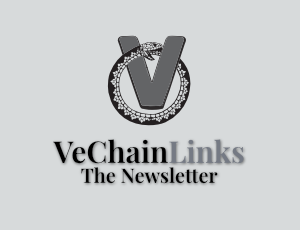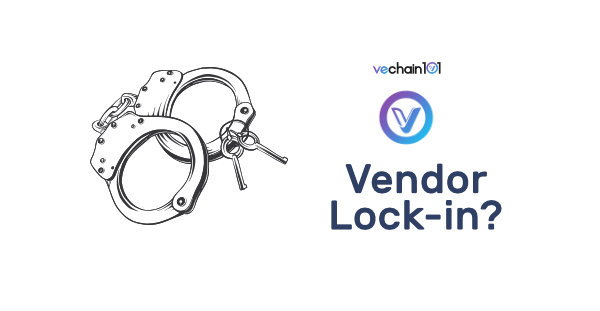Disclaimer: The following is a review and discussion about Ellipal’s hardware wallet. Some promotional information was included to support Ellipal’s outreach within the VET community and encourage third-party companies to get involved. VeChain101 turned down the option of placing affiliate links within the article to keep the content as objective as possible.
Storing cryptocurrency is still one of the biggest challenges and questionmarks surrounding investors in the industry. Users have a number of options, ranging from leaving it on exchanges to engraving the keys on metal and burying it in the ground. A strong argument can be made for specialized hardware wallets that have multiple layers of security and can keep your private keys offline, safe from the prying eyes of malware and other threats.

The device next to other items, for scale
There are many hardware varieties on the market, and many resemble a USB drive or something similar. The ELLIPAL Titan Hardware Wallet is different. It resembles a smart phone, with a full touch screen, a camera, and a fully-metal casing. That makes it a lot easier to interact with, especially if you plan to be managing a handful of different tokens.

Mobile app bound to wallets on device
So what are the benefits of an Ellipal wallet? Well for starters, unlike other hardware wallets, it’s completely air-gapped. That means there aren’t any Wi-fi connections, Bluetooth connections, USB ports, or any other means for a hacker to exploit. The only way in or out is through a linked Ellipal smartphone app on your mobile device, that serves as a gateway to transactions, wallet management, DeFi, exchanges, and other tools. Having the app makes your wallets feel a lot more portable as well – you won’t be able to execute any transactions without the hardware wallet, but you can view account balances on your smartphone, which is nice to have when you are on the go.
Thasit Kulvaranon, Ellipal’s Marketing Manager, spoke about how the Ellipal team was eager to integrate VeChain to their list of supported tokens. “VeChain has been on our scope for a long time due to the amount of users who keep requesting us to support VeChain. Seeing the potential that this coin has, it’s a growing community and with our aim to satisfy our users’ needs, it was a no-brainer that we wanted to add VeChain to our ecosystem.”
Thasit also talked about how early confusion over token swaps put VeChain on their radar. “We also had a lot of users hoping to secure their VET, and were mistakenly sending VET to their VEN accounts (which we helped recover of course). It was definitely one of the early signs that pushed us to add VeChain.”
Who would benefit from an Ellipal wallet?
People who buy and store a large amount of cryptocurrency and like feeling in control of their assets. Having used other hardware wallets and paper wallets, the asset always felt distant, and I would always worry about whether or not I had written down private keys correctly when the hardware was out of sight. With the full-sized color touch-screen on the Ellipal Titan and connected smartphone app, the user feels in control.
The $170 listing price may discourage some, as it doesn’t make sense to store a couple hundred bucks worth of cryptocurrency on this device. However, those with larger holdings may consider it worthwhile. For people with diverse holdings, the full screen makes it easy to browse and manage multiple wallets. The Ellipal has support for over 30 different blockchains, including the big ones like BTC, ETH, ERC-20 tokens, XRP, LTC, and now VET.
How does it work?
Once a cryptocurrency wallet and private keys have been generated on the device, you can bind each to your mobile app by scanning a QR code. Outgoing transactions and dApp usage can then be set up within the mobile app.

This transaction will generate a QR code, which must then be scanned on the Ellipal device, in order to be signed. Users can re-confirm the details on the Ellipal device, then tap confirm. This generates a second QR code, which must be scanned by the mobile app to finalize the transaction. This process can feel a bit repetitive, but a necessary one for a device without any network or physical connections. It’s also worth mentioning that the mobile app and Ellipal device give clear instructions, so novice blockchain users will feel more at ease with the UX, with less room for error, and without that anxiety that comes with not having full confidence in the process.

The mobile app allows users to trade between token pairs
Advantages
The device looks and feels nice, and it’s great working with something on a full color screen. In this regard, it has a far superior user experience to a more discreet wallet like a Ledger Nano X. Not needing to be plugged into a computer makes the process a lot more streamlined and feels like how using modern technology should. And the feature list is impressive: it claims to be tamperproof, meaning it self-destructs if an attacker tries to physically take it apart and access the inner components. Note: I did not take out a screwdriver and a chisel to test this claim, but there is video evidence available online.
Drawbacks
The main drawback for VeChain holders or users of other “blockchain 3.0” platforms is that it’s not very dApp friendly. Users won’t be able to take advantage of browser plugins and VeChain’s Sync browser to interact with dApps, unless Ellipal integrates them into their smartphone app down the road. This is something that Ellipal looks to be leaning towards, as they already offer a number of Exchange and Finance tools to give the device even more functionality, but for VET you will be limited to simply holding your tokens (VET & VTHO) for now. This is a good time to bring up wallet management skills: that users should have different wallets for different tasks anyways (i.e. one for dApps, one for public transactions, one for long-term investments), but this could be an issue for some holders, especially for people with nodes.
Conclusion
For someone with a diverse portfolio of BTC, ETH, and a sprinkling of altcoins, this device is a great way to feel comfortable and safe managing your digital tokens. This feels and performs like one of the top hardware wallets on the market, and the touchscreen is good for anyone, ranging from blockchain experts to teenagers and even the elderly.
“Our expertise and quality comes from giving a secure yet simple cold storage choice which we will always focus on. The ELLIPAL Titan is a 100% air-gapped device meaning it is purely for cold storage and QR code signing. Our App, however, has more potential to do more than just storage. This is why we also provide crypto exchange, fiat to crypto exchange and other finance services on the App. It will be interesting to see what we can do with VeChain in the future and grow together as an Ecosystem.”
Thasit Kulvaranon, Marketing Manager

Ellipal’s current promotion and VET airdrop is available through the end of the month
Useful Links:
Learn more about ELLIPAL Titan:
https://www.ellipal.com/pages/coldwallet
ELLIPAL Twitter:
https://twitter.com/ellipalwallet
ELLIPAL Telegram:
https://t.me/ellipalglobal
ELLIPAL Facebook:
https://www.facebook.com/ellipalclub/









![VeChain X Footwear – Shoes on the blockchain [in photos]](https://vechain101.com/wp-content/uploads/2020/06/shoes-400x250.jpg)








 <
<






